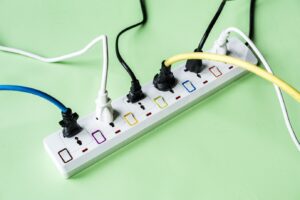Avoid These Common Errors in Your Light Switch Wiring Project

Wiring a light switch might seem straightforward, but many people make common mistakes that can lead to problems. Here’s how you can avoid these errors and ensure your light switch wiring is done safely and effectively.
- Not Turning Off the Power
Before starting any wiring project, the first step is to turn off the power. This is the most important safety measure. Always switch off the circuit breaker that controls the light switch you’re working on. Never rely on just the wall switch to cut off power. Double-check with a voltage tester to ensure the wires are not live.
- Ignoring Wiring Codes
Electrical codes are in place to ensure safety and functionality. Ignoring these codes can lead to dangerous situations. Make sure to follow local electrical codes and regulations. If you’re unsure, consult a professional or refer to a code book.
- Using the Wrong Wire Gauge
Using the incorrect wire gauge is a common error. If the wire gauge is too small, it can overheat and cause a fire. Check the recommended wire gauge for your specific light switch and outlet electrical wiring. Generally, 14-gauge wire is used for lighting circuits, while 12-gauge is used for heavier loads.
- Incorrectly Connecting Wires
Connecting wires incorrectly is a frequent issue. Each wire has a specific purpose: hot (black or red), neutral (white), and ground (bare or green). Misconnecting these can lead to shorts or other electrical problems. Ensure that each wire is connected to the correct terminal on the switch.
- Overlooking Grounding
Grounding is crucial for safety. The ground wire prevents electrical shock by directing stray electricity safely to the ground. Make sure you connect the ground wire to the green grounding screw on the switch. If your outlet electrical wiring does not have a ground wire, consider having it updated by a professional.
- Not Using the Right Tools
Using the wrong tools can make wiring more difficult and increase the risk of mistakes. Use appropriate tools such as wire strippers, screwdrivers, and pliers. Using a wire stripper ensures that you remove the correct amount of insulation without damaging the wire.
- Neglecting Wire Insulation
Proper insulation is vital to prevent electrical shorts. Ensure that the insulation on your wires is intact before connecting them. If the insulation is damaged, strip off the damaged part and use new wire. Never splice wires together without proper insulation.
- Failing to Secure Connections
Loose connections can cause flickering lights or even electrical fires. Make sure all connections are tight and secure. Use wire nuts to connect wires, and ensure they are properly twisted and tightened. Avoid over-tightening, as it can damage the wire.
- Overloading Circuits
Overloading circuits can cause tripped breakers or even fires. Ensure that the circuit you are wiring can handle the load of the new light switch. Check the rating of your circuit breaker and ensure it matches the requirements of your lighting setup.
Switch to Excellence with Deep Electric!
At Deep Electric, our “Wiring Light Switch” stands out for its precision and reliability. Crafted with top-grade materials and adhering to industry standards, this switch ensures seamless operation and durability. Its innovative design simplifies installation, while its superior build guarantees long-term performance. Choose our wiring light switch for a blend of efficiency and style that enhances any electrical setup. Illuminate Your Space with Confidence!
